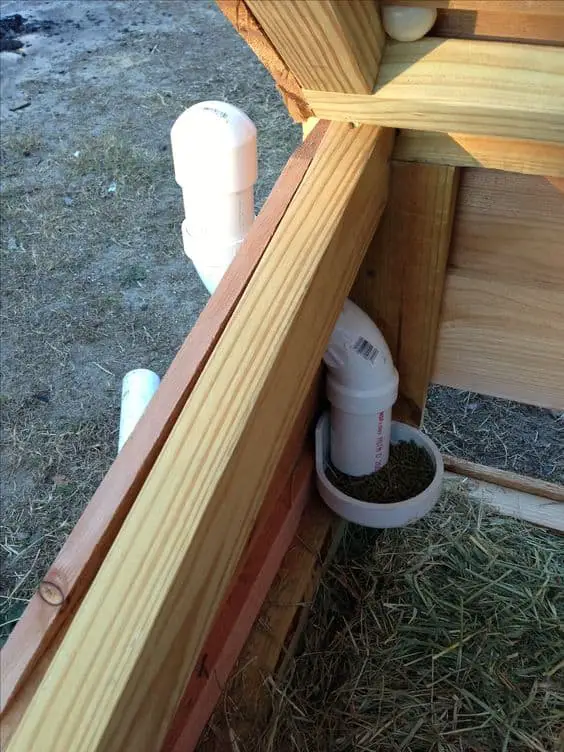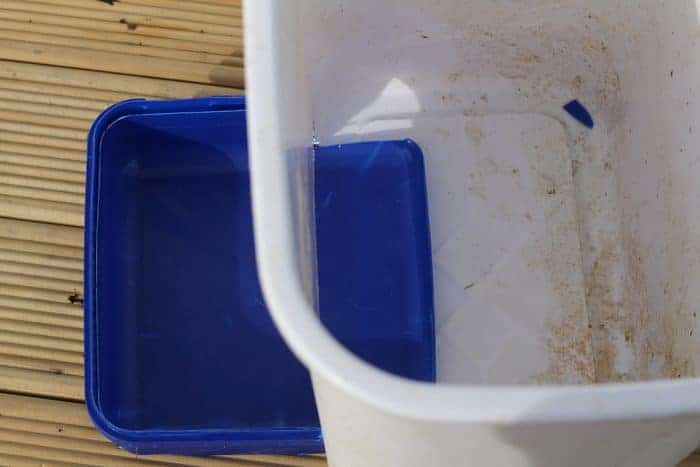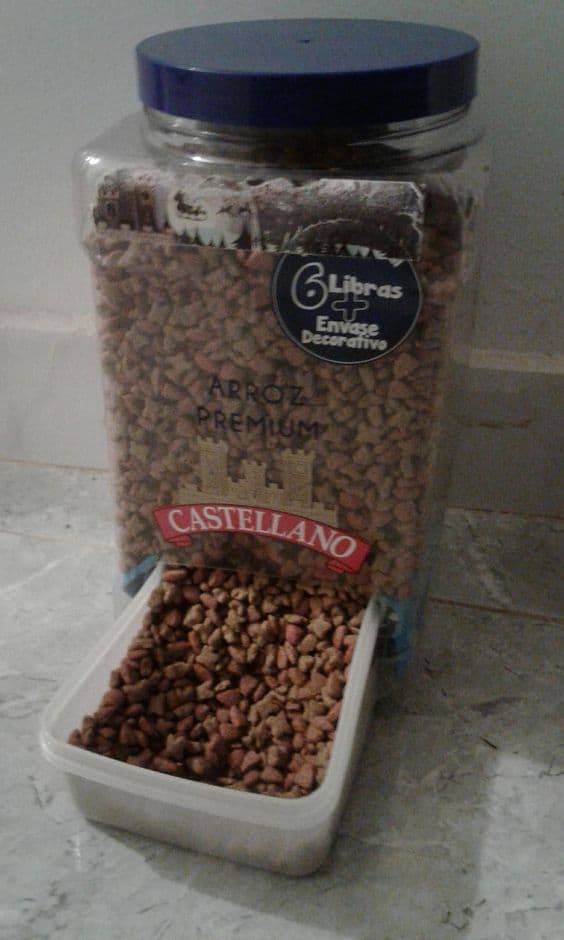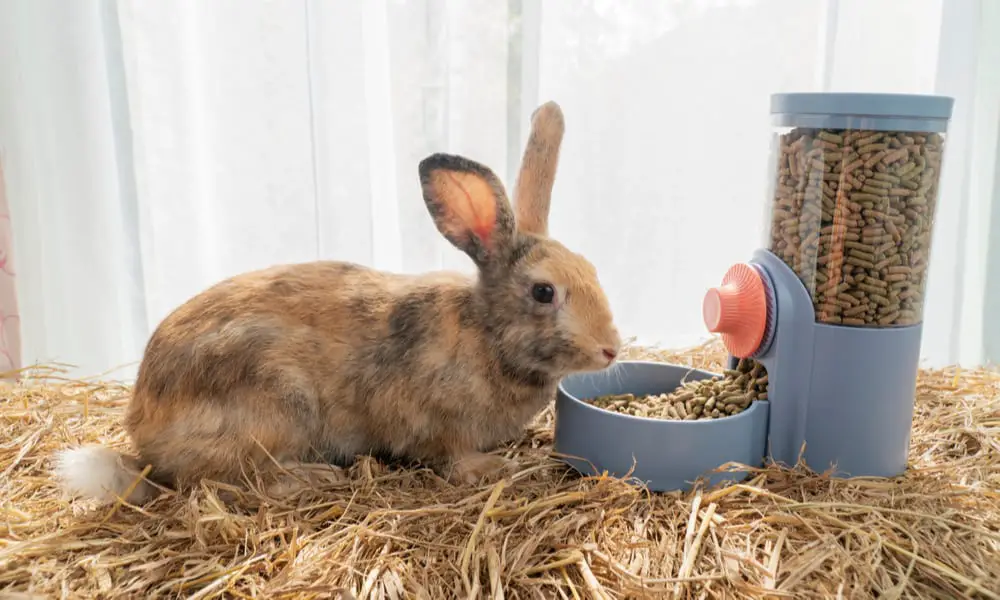Rabbits can eat all sorts of things, including fruits, vegetables, commercial rabbit pellets, and grass. Protein-based hay should be the biggest part of their diet though, even if they’re pets. It’s a balanced meal, helps their digestion, and keeps their teeth from overgrowing. Let’s see how to make a DIY rabbit feeder, based on the various dishes that your (pet) bunny enjoys.
1. DIY Rabbit Feeder – Stan Sullivan
You don’t have to be a woodworking pro to make this dual DIY rabbit feeder. It takes both hay and pellets, and this one is made using about a dozen bits of scrap wood measuring 1 x 2 and 1 x 4. The pieces are joined with glue and reinforced with nails, but screws work as well.
If you don’t have hand-saws, you can check the video notes for accurate measurements then have them pre-cut at Home Depot or your local hardware store. They can do L-shaped cuts for the sides to make your work easier. Bits of chicken wire can add a hay feeder on the side.
2. How To Make A DIY Rabbit Feeder – Stone Family Homestead

This DIY rabbit feeder is a gravity-based model and it uses items that most of us have around the house. You need a plastic peanut container or something similar. Any square plastic jar will do, so even if you’re not into peanuts, you probably have one from condiments or snacks.
The jar should have a screw-top lid. You’ll also need a second plastic dish that’s wide and shallow. To make the feeder, cut a hole at the bottom of the jar. The hole should be about 1” by 4”. Stand the jar on the shallow plate then add pellets. They’ll dribble through the hole.
3. DIY Automatic Rabbit Feeder – Timothy DC
PVC pipes are the perfect raw material for DIY rabbit feeders. And you can construct them the hard way or the easy way. If you take the convoluted route, you’ll start with a single piece of pipe then cut and glue its various bits to form end caps, adaptors, and auto-feeding valves.
Or you could do it the easy way – buy the premade end caps and adaptors from the store. It won’t cost much more and will save you tons of work. This build uses a 2” pipe, a 3” pipe, an adaptor, an elbow, and two end caps. Drill 1” or 1.5” holes in the pipe so the bunnies can eat.
4. DIY PVC Automated Rabbit Feeder – Pinterest

This next DIY rabbit feeder is similar to the one above, but it’s even simpler to make. Instead of having a horizontal length of pipe and doing all that drilling and sanding, get a single vertical pipe and mount a tray or pipe below it where the rabbit pellets will settle for feeding.
You can still attach an adaptor at the top to serve as a hopper. And if you want to make it even easier to load the rabbit feeder, position the feeding outlet inside the hutch but use elbows to place the hopper outside the hutch. Then you can refill it without entering the cage.
5. How to Make a Simple Rabbit Feeder – Aggelos Argyropoulos
This DIY rabbit feeder is similar to the one by Stan Sullivan. But it has a few key differences. The front has tapered sides rather than straight ones, so it’s slightly more stylish. The bunny won’t care, but you will, so it may be worth the extra step of cutting frontal trapezoid shapes.
Also, Stan’s feeder is permanently mounted inside the hutch, and the rabbits sleep outdoors. But for this version, the rabbit feeder is a freestanding model that’s better suited to indoor pet bunnies. You can move it to wherever they’re eating, and you can carry it on trips too.
6. DIY Coffee Can Rabbit Feeder – Skyview Acres

If you have any coffee cans or large tins lying around, they’re an easy basis for a DIY rabbit feeder. And it seems fairly simple to make – just be careful not to slice your hands open on the jagged metal while you work! Cut the front half open, leaving a lip-like tray at the base.
Fold the sharp edges and crimp them to avoid cutting the bunny as it feeds – or hurting yourself as you load it. Use the piece you had cut off to make a front cover panel for the hopper. Drill holes at the bottom of the can so any dust or debris gets sifted out of the food.
7. Rabbit Feeder DIY – Homeyard Hobby
When a video tutorial is done right, language barriers aren’t a big issue. So while the audio on this demo isn’t in English, the crucial parts are translated on the screen, and the visual steps are easy to follow. These DIY rabbit feeders are similar to other J-feeders on this list.
But the front and bottom of the J-feeders are cut open the covered with plastic screens to sift out any dust and dirt. The PVC pipe is 4” in diameter and the plastic bug screens have 3mm holes. You don’t need power tools either. You can make these with a handsaw and a glue gun.
8. Metallic DIY Rabbit Feeder – Pinterest

Some people just don’t like plastic. It could be because they think its proliferation is bad for the environment. Or maybe they just think metal lasts longer. Either way, you can replicate the concept of a PVC J-feeder and substitute with air ducts instead of plastic plumbing pipes.
These pipes are typically aluminum or galvanized steel, so they can withstand the elements. The front section slips into the hutch so the rabbits can access it, then that portion of the duct is sliced open for food to come out. Use foil or silver duct tape to waterproof the seams.
9. How to Make an Easy, Inexpensive Rabbit Feeder – Madd Rabbit Tree
PVC pipes are among the most cost-effective materials for a DIY rabbit feeder. But you can scale your expenses down even further if you use a plastic soda bottle. It should be 2 to 3 liters, and the harder the plastic is, the better, so look through your pantry for empty bottles.
To make the feeder, cut the sides to form the right shape, and cut holes at the bottom for the dust to slip through. This is a flimsy feeder though, so it may only work for smaller bunnies that are mild-mannered and mostly live indoors. You’ll probably need to make lots of spares.
10. Easy To Make DIY Plastic Bottle Pet Feeder – Pawbuzz

As we just mentioned, the stronger the plastic, the tougher the feeder. So while juice and soda bottles can do the trick, milk bottles are even better. This DIY rabbit feeder is designed using two square dairy bottles. Cut the first bottle in half, or just slice out its bottom portion.
This makes the hopper. On the second bottle, first cut a hole that fits snugly around the mouth of the hopper. Then cut a section of the front to make the feeding trough. Slip the top bottle into the hole in the bottom bottle, and sand or melt the exposed edges to make them smooth.
11. Our Rabbit Self Feeding and Watering Systems by a @Gettin’ Junk Done
Back to PVC. The trick in gravity DIY rabbit feeders is the size and the incline. You want wider pipes for the loading section and narrower ones for the eating section. This difference in diameter controls the pace of the food, so it flows down gradually to avoid overfeeding.
The front section is cut open and sealed with a cap, but make sure you sand down any sharp edges that might cut the rabbits as they eat. In this model, the feeding pipe is 3” wide while the hopper section is 4”. The segments are connected by elbows and adaptors at a 45° angle.
12. How to Make a J Feeder and Hay Rack for your Rabbits or Chickens

Ordinarily, the hopper in your DIY rabbit feeder – aka the loading section – is made of a wider pipe to control the flow. But you could also use a 2 or 3-liter bottle as a hopper. Just slip it into the top of the PVC pipe. But what if you want a J-feeder with multiple spouts?
In this scenario, both the hopper and the eating tray are made from PVC piping. But instead of using a single elbow as an outlet for your bunny pellets, this feeder has a T-shaped adaptor connected to two elbows. This way, your rabbits can eat from both sides to avoid scrambling.
13. Super Criar DIY Plastic Pet Feeder and Drinker
Automated kibble feeders that work for cats and dogs are sometimes effective for rabbits as well. So here’s an idea you can implement to make DIY rabbit feeders and waterers. This concept combines two of the ideas we’ve seen above – a milk bottle and a large soda bottle.
To make the feeding tray, cut open the milk bottle just like before. You could also use a bottle for cooking oil or detergent but clean it thoroughly. Then use the softer soda bottle as the hopper since it can easily squeeze into the other bottle’s openings. Make the edges smooth!
14. Automated DIY Rabbit Pellet Dispenser

Yes, we’ve looked at a DIY rabbit feeder made from peanut jars. But in that scenario, the jar sat above the trough and wasn’t attached. In this variant, the feeding tray is customized to fit inside the hopper slot. You can use any shallow container or old Tupperware for the trough.
The trick is to cut a hole that’s the exact size of your feeding trough. That way, it snugly slips into position. When you use this kind of feeder with rabbits, you need to tie it to the side of their cage using zip ties or wire. It also helps to raise the feeding tray a bit above floor level.
15. Simple Pet Feeder (Automatic Rabbit Feeder DIY) – The Expert Amateur
Okay, time to get complicated. This next DIY rabbit feeder is more of a weekend task than a coffee-break project. And you’ll need materials and tools that don’t typically lie around the house unless you have a well-equipped workshop. You need sheet metal and plywood scraps.
The wood should be a few millimeters thick. Cut two arches for the sides and a rectangle for the slope. Cover the open sides with sheet metal, crimping the edges to avoid injury. If you don’t have a power saw, take accurate measurements and ask the hardware store to pre-cut it.
16. DIY Rabbit Feeders for Hay – Pinterest

We started with a DIY rabbit feeder that had a hay rack attached to the side. But you might want to make a designated DIY hay feeder. We have a whole other article for that, but here are some ideas you could try on the go. You’ll need some old plastics from a local garage sale.
These three options include a plastic trash can, opaque storage bins, and/or an upside-down laundry hamper. The last one is easy – just stuff it with hay and put a weighted object above it so the bunnies can’t tip it. The other two involve cutting holes and/or covering them with mesh.
17. Best Rabbit Feeder – True North Haven
So far, we’ve looked at angled J-feeders and mini J-feeders. But if you want to expand the capacity of your DIY rabbit feeder, you may need a taller pipe that can hold more feed. This means you can refill it less often, which reduces your workload. These PVC pipes are 3” to 4”.
The slimmer pipe is perforated, which makes it easier to cut open the feeding trough. And while you need a taller hopper, its top should be at a comfortable height so you can load it without dismantling it. Glue essential sections and leave the rest loose for quicker cleaning.
18. DIY Rabbit Feeder with Clothes Pegs – Lara Robert

For pet bunnies that enjoy leafy vegetables, this DIY rabbit feeder doubles as a food toy. It forces your bunnies to work for their food, giving them a bit of extra exercise in the process. And it’s so fun to watch! You’ll need one of these octopus clothes hangers or hanging pegs.
You can find them at the dollar store, and most grocery stores. And you don’t have to do any chopping, measuring, or cutting for this one. Just hang the … hanger … securely so your bunnies can’t tug it off its hook. Then clasp assorted greens on the pegs for bunnies to nibble.
19. A Short Demonstration on How To Make J-Feeders For Rabbits
https://www.youtube.com/watch?v=sP4dQmirLyE
Let’s close with a quick trip to Jamaica. Sheldon is a construction worker that farms on the side. And since he has technical skills, he can make DIY J-feeders for his rabbits. They eat foraged food, mainly red head plants and wild tobacco. And their feeders are all sheet metal.
Sheldon has rigged up a bender that he uses to shape his DIY rabbit feeders. Use a template to trace the pattern onto 22-gauge sheet metal, then slice it with tin snips and bend it as needed. Uses rivets or staples to complete the feeder. Remember to crimp the sharp edges!
What kinds of rabbit feeders do you have set up at home? Show us photos in the comments!
